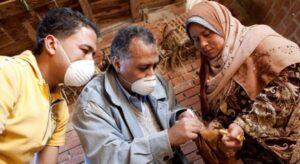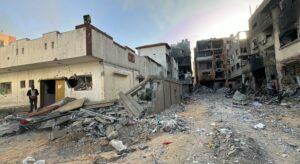The development comes 11 months after the country’s devastating civil war ended with the overthrow of the Assad regime by opposition forces loyal to new President Ahmad Al-Sharaa.
Today, as Syrians return home in growing numbers, the shattered country faces chronic shortages of foreign investment, medicine, electricity and equipment.
According to the WHO, only 58 percent of hospitals and 23 percent of primary health care centers are fully functional today.
“Services on the ground remain very fragile…health needs continue to increase. » warned the representative of the United Nations agency in Syria, Dr. Christina Bethke.
She said that since mid-year, more than 400 health facilities have been affected by funding reductions and 366 have suspended or reduced their services.
In total, 7.4 million people have seen their access to medicines and treatments reduced, according to the WHO.
In just two months, this made it possible to avoid 122,000 trauma consultations and allow 13,700 deliveries without qualified personnel.
“We continue to see shortages of health personnel and the conditions for the return of these qualified health professionals are still not necessarily in place,” Dr. Bethke told reporters in Geneva via video from Damascus.
More than a million return home
The latest UN data indicates that more than 1.16 million Syrians have returned to their country since the fall of the Assad regime.
The lack of available healthcare is a key factor deterring more people from returning home, in addition to the widespread destruction of housing and infrastructure, lack of jobs and the current volatile security situation.
According to the UN refugee agency, UNHCR, more than seven million Syrians remain internally displaced and more than 4.5 million still live abroad.
“Most people would prefer to return with their families, so if you are considering returning to your beloved Syria, you will want to know that there is a school there, that there is shelter there, that you have electricity and connectivity, that you have water,” explained WHO’s Dr. Bethke.
Looming hotspots
In northeast Syria, the Hassakeh National Hospital could see donor support run out next month.
It is the only comprehensive public hospital that can accommodate more than 300,000 people. If funding fails, key services likely to suffer will be the ambulance and referral system, as well as 24-hour primary care in several camps.
“We also received reports this week from partners that support to al-Kasrah General Hospital in Deir-ez-Zor has been suspended, forcing most departments to halt operations, with only dialysis and physiotherapy continuing – affecting more than 700,000 people,” Dr Bethke added.
To maintain health care in Syria, the UN and its health sector partners need $565.5 million.
Only about 20 percent of this sum has been received. Of the $141.5 million that WHO needs this year for its work and that of its partners, $77 million remained unfunded as of last month.
“Without predictable, multi-year support, the health system could collapse just when recovery is within reach,” insisted Dr. Bethke.




